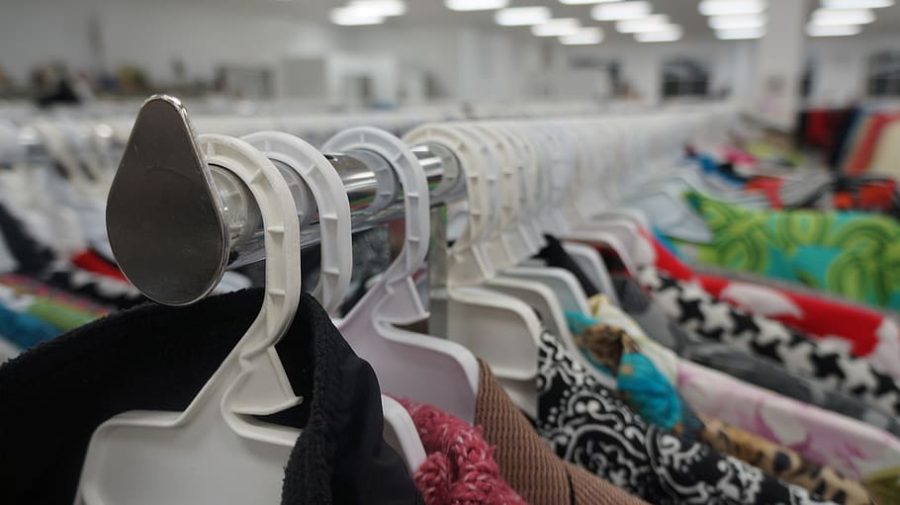The Gentrification of Thrifting
April 17, 2023
Thrifting is the new luxury. Or is it? Teens and young adults globally have moved away from the uniformity of high-end and mass-market fashion brands in favor of the much cheaper experience that is thrifting. In Japan specifically, entire roads and neighborhoods have become known for their thrifting opportunities, creating trendy places for young adults and teens to hang out. But what are the implications of this trend? Should middle-class or rich people even be thrifting in the first place?
These questions raise some alarm bells and evoke a range of emotions among young people. This can be seen in the public online discourse on whether thrifting is ethical for this new audience of customers, or if it does more harm than good.
First, let’s look at the term “gentrification.” In its simplest form, gentrification occurs when people of higher socioeconomic status partake in something that is traditionally for those in the working class, thereby making it more glamorous and desirable. While this could be seen as a good thing, it has had plenty of negative consequences when it comes to thrifting.
One of the main effects of gentrified thrifting is rising prices at thrift stores. Thrift stores were meant to aid impoverished people, providing them with access to a variety of clothing at an affordable price. Rising prices obviously threaten this intention, as it makes the clothing less accessible to people who truly need it.
Of course, thrift stores are still businesses, and they need to turn a profit, but many argue that this increase in prices jeopardizes the original goal of the store. Many thrift stores have introduced higher price ranges for certain items based on brand and trendiness; however, this allows only the wealthier customers to afford these items, while the people who cannot afford these prices, but really need the clothing, are left with the old and low-quality items.
One group of shoppers who often receive blame in this situation is resellers. Buying low-priced items at thrift stores and reselling them for higher prices online has become a trend across the world. This would certainly seem problematic, and at odds with the goal of providing low-cost clothing for those in need. But before we rush to place all of the blame on resellers, we should note that these people often create their own small business around the activity, providing value-added services including taking pictures, communicating with customers, hand-picking the items, and shipping them out.
In addition, many resellers sell through a third-party website which takes a percentage of sales as commission. Because of this, the seller’s revenue could be less than 50% of their listed price, often causing them to barely break even. Despite this, internet ghouls love to place the blame on these sellers, arguing that purchasing the nicer items in bulk and showing the demand for them is creating the incentive for thrift stores to raise their prices.
But what if resellers actually create benefits for thrifting? Most thrift stores are only able to put out 20 percent of the clothing that gets donated, with the rest going to landfills, or being sent to impoverished countries. The other 80 percent is often kept in the back, and employees are able to pick out the best of the best from this stock, and replenish the needed sizes. By shopping frequently, resellers increase the amount of clothing that is bought and sold, thus increasing product turnover. It may not be so clear that resellers are only contributing negatively to the situation.
What about store owners? Perhaps they are not without blame here. The businesses are able to operate with the lower prices, but managers have changed the pricing systems to differ by brand and style rather than simply by clothing type. This leads to increased profits for those at the top, with regional Goodwill CEOs, for example, making anywhere between $500,000 and $1,000,000 per year. For a nonprofit, this level of income is absolutely absurd.
What does this mean for the typical student at ASIJ who participates in thrifting, perhaps as a hobby, side business, or simply to replenish their wardrobe? When thrifting, it’s important to be conscious of our habits. Thrifting can and should be seen as a sustainable and fun way to shop for clothes, but not something to be abused, and overused. In short, the gentrification of thrifting may not be as bad as the internet is making it out to be. In the long run, thrifting is a sustainable and affordable alternative to fast fashion and luxury goods, but we should still be wary of overconsumption.




















Elise Chuchro • Jun 1, 2023 at 2:50 PM
This beautifully written article really made me think about thrifting as a whole. when I started thrifting I never thought about these issues that are brought up. I never thought about thrifting purely being a cheaper option for less fortunate people. Now thrifting is mainly seen as a source for the best and newest fashion trends, now I realize there is more to thrifting for others. This really makes me think about gentrification as a whole.
Erika K • May 3, 2023 at 11:59 AM
Such a relevant and insightful article. When reflecting back on my own experiences with thrifting I definitely notice the change in culture surrounding second-hand clothing and even the change in styles of clothing that are put on the front racks. Really makes me wonder what other industries gentrification has also affected.
Courtney Carreon • Apr 20, 2023 at 12:08 PM
Such an interesting article, William, Thank you for sharing your insights and giving us more information!